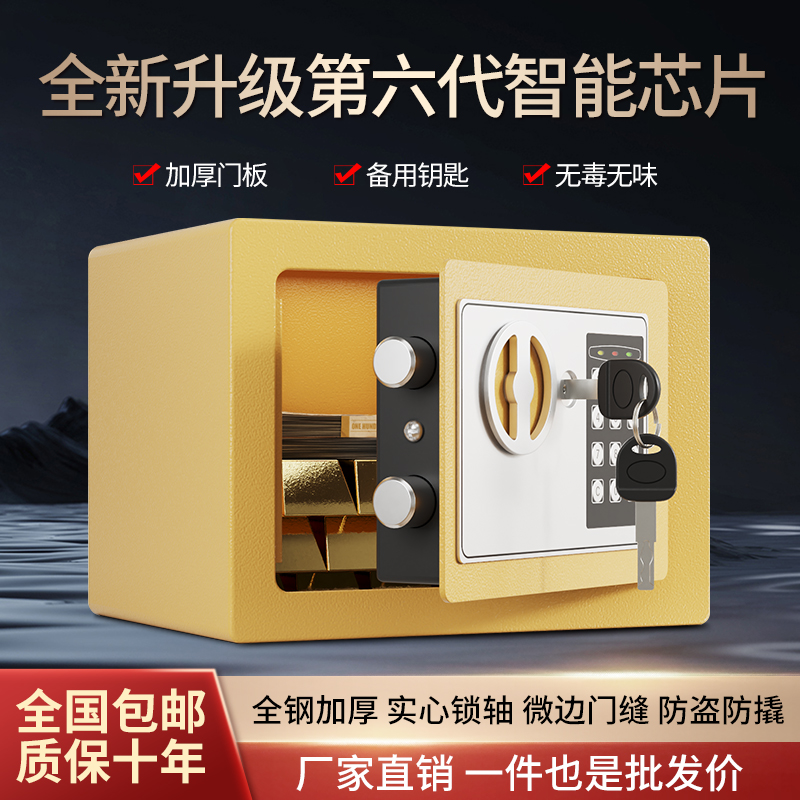办公空间中的安全卫士——保险柜的选购与使用技巧
甙邵登峰
2024-10-20 07:00:56
0次
**办公空间中的安全卫士——保险柜的选购与使用技巧**
一、引言
在现代化办公环境中,信息安全和财产安全至关重要。保险柜作为保护贵重物品和重要文件的安全设备,其在办公空间中的地位不容小觑。本文将详细介绍保险柜的选购与使用技巧,帮助您在众多品牌和型号中选择最适合的保险柜,并正确使用它来保障办公空间的安全。
二、保险柜的选购技巧
1. 明确需求:在购买保险柜前,首先要明确自己的需求。考虑存放物品的种类、价值以及保险柜的放置位置等因素。
2. 品牌与质量:选择知名品牌,质量更有保障。同时,注意保险柜的材质,优质的保险柜通常采用钢材制造,具有较高的防撬、防火性能。
3. 安全性:保险柜的安全性能是选购的关键。除了材质外,还要考虑锁具的种类(如密码锁、指纹锁、钥匙锁等)以及是否有报警功能等。
4. 尺寸与容量:根据存放物品的多少选择合适尺寸的保险柜。同时,考虑到未来可能增加的物品,可以适当选择稍大一些的保险柜。
5. 价格与预算:根据自身经济状况和预算,选择性价比高的保险柜。 三、保险柜的使用技巧 1. 正确安装:保险柜应安装在隐蔽、不易被破坏的位置,并确保其稳固性。避免安装在易燃、易爆等危险区域。 2. 设置密码与锁具:设置复杂且不易被猜到的密码,并定期更换。对于带有指纹识别或钥匙锁的保险柜,要妥善保管好指纹信息和钥匙。 3. 定期检查:定期检查保险柜的性能和锁具的完好情况,及时发现并修复潜在的安全隐患。 4. 记录与审计:对存放的物品进行记录和审计,确保重要物品的完整性和安全性。 5. 报警系统:如有条件,可安装与保险柜相连的报警系统,一旦发生非法入侵或破坏行为,及时报警并采取相应措施。 四、总结 通过上述的选购和使用技巧,我们可以选择一款适合自己的保险柜,并将其有效运用到办公空间中,为我们的信息安全和财产安全提供有力保障。在现代化办公环境中,保险柜作为安全卫士的角色愈发重要,我们应该重视其选购和使用过程中的每一个环节,确保其发挥最大的作用。 **The Safety Guard in Office Space - Tips for Purchasing and Using Safes** Introduction: In a modern office environment, information and property security are of utmost importance. As a secure device to protect valuable items and important documents, the safe plays a crucial role in the office space. This article will provide detailed tips for purchasing and using safes, helping you choose the most suitable one from a variety of brands and models and properly using it to ensure office security. Purchasing Tips for Safes: 1. Clarify Your Needs: Before purchasing a safe, it is essential to clarify your needs. Consider the types of items you plan to store, their value, and the placement of the safe in the office space.2. Brands and Quality: Choose a well-known brand for better quality assurance. Pay attention to the material of the safe, which is usually made of steel for its anti-prying and fire resistance.
3. Safety: The safety performance of the safe is the key to purchasing. Apart from the material, consider the types of locks (such as password locks, fingerprint locks, key locks, etc.), and whether it has an alarm function. 4. Size and Capacity: Choose a safe with an appropriate size based on the number of items you plan to store. Consider future needs and choose a slightly larger safe if necessary. 5. Price and Budget: Select a safe with a good price-performance ratio based on your financial situation and budget. Using Tips for Safes: 1. Correct Installation: The safe should be installed in a concealed and difficult-to-break location, ensuring its stability. Avoid installing it in hazardous areas such as flammable or explosive ones. 2. Setting Password and Locks: Set a complex password that is not easy to guess and change it regularly. For safes with fingerprint or key locks, keep the fingerprint information and keys well-protected. 3. Regular Checks: Regularly check the performance of the safe and the integrity of its locks to identify and repair potential safety hazards in time. 4. Record and Audit: Keep records and audits of stored items to ensure the integrity and safety of important items. 5. Alarm System: If conditions permit, install an alarm system connected to the safe to promptly alert and take corresponding measures in case of unauthorized intrusion or damage. Conclusion: Through the above purchasing and using tips, we can choose a相关内容
热门资讯
密码锁、电子锁,哪种类型的办公...
本文讨论了密码锁和电子锁在办公保险柜中的应用,指出每种锁的优缺点及适用场景。密码锁物理安全高,但需防...
密码、指纹、钥匙:解锁保险柜的...
本文介绍了密码、指纹识别和智能钥匙等现代科技解锁保险柜的多种方式,探讨了它们的特点和适用场景。无论选...
高效办公的秘密武器——智能保险...
智能保险柜是现代办公中高效安全的文件存储工具,通过正确选择、设置密码、合理使用特殊功能及维护保养等措...
办公室的守护神:保险柜产品特点...
保险柜产品以高强度材料和先进技术保障安全,广泛用于办公室,可保护财务资产、文件资料和贵重设备。在快速...
密码保险柜使用注意事项及常见问...
密码保险柜使用注意事项包括密码设置、放置位置、操作方式等,并解答了常见问题如忘记密码、无法打开和清洁...
防止数据泄露的利器——办公保险...
本文介绍了办公保险柜在防止数据泄露中的重要性,其采用先进技术、物理保护和权限管理等手段确保数据安全,...
打破传统,迎接智能办公时代——...
随着智能办公时代的到来,保险柜需进行革新升级。智能保险柜采用生物识别、远程控制等技术,提高管理效率和...
保险柜的种类与特点,你了解吗?
保险柜种类多样,包括家用、商用、防爆防砸及移动式等,具有高安全性、多种尺寸和类型、优质材料及便捷操作...
打造安全办公环境,保险柜的选择...
摘要:打造安全办公环境需注重保险柜的选择与配置。应选坚固耐用、具备多锁系统、防火防潮的保险柜,合理配...
办公桌上的守护神——如何选择合...
本文介绍了如何根据实际需求选择合适的保险柜,包括明确需求、了解不同类型、考虑材质和结构、关注品牌和服...



